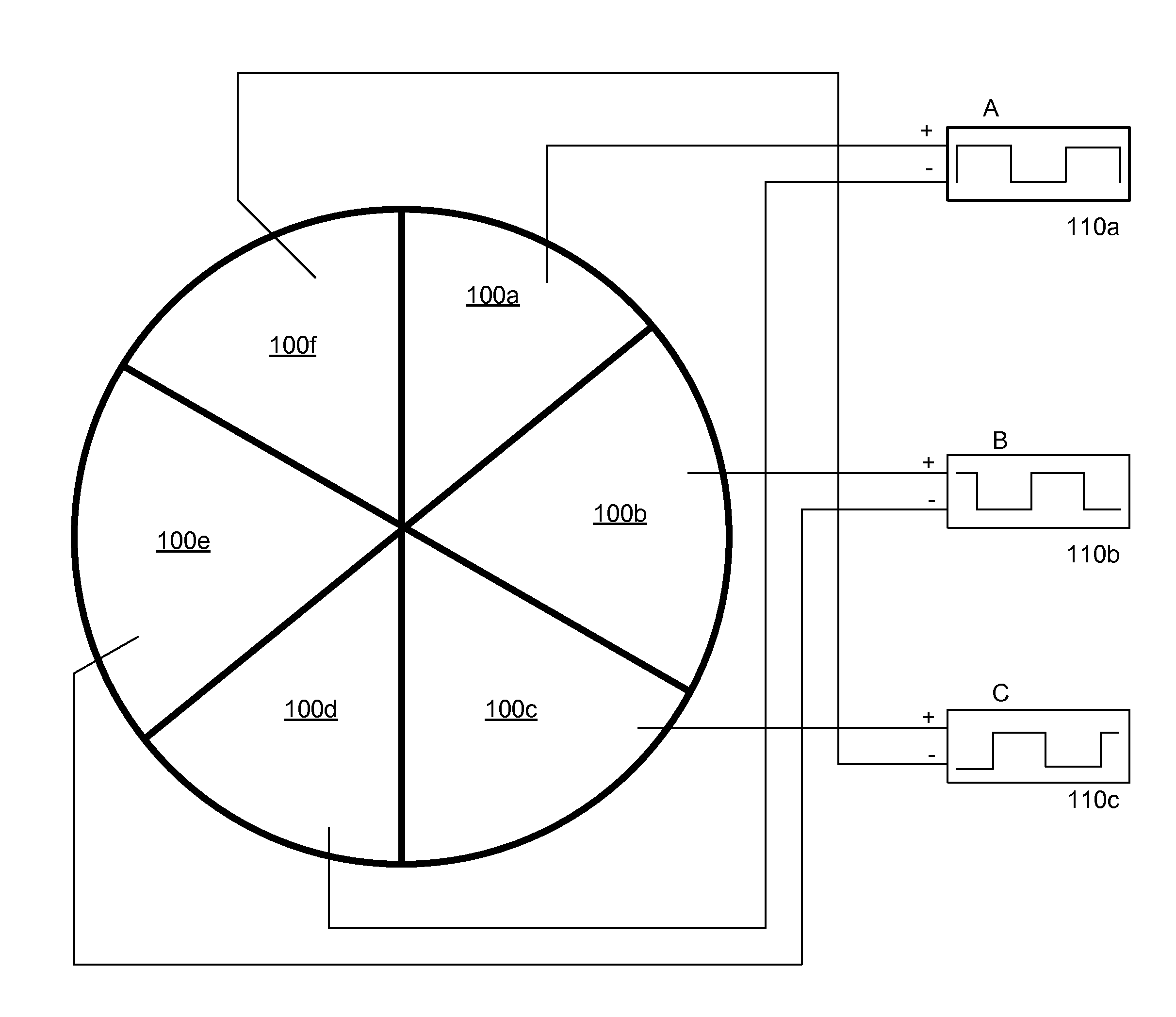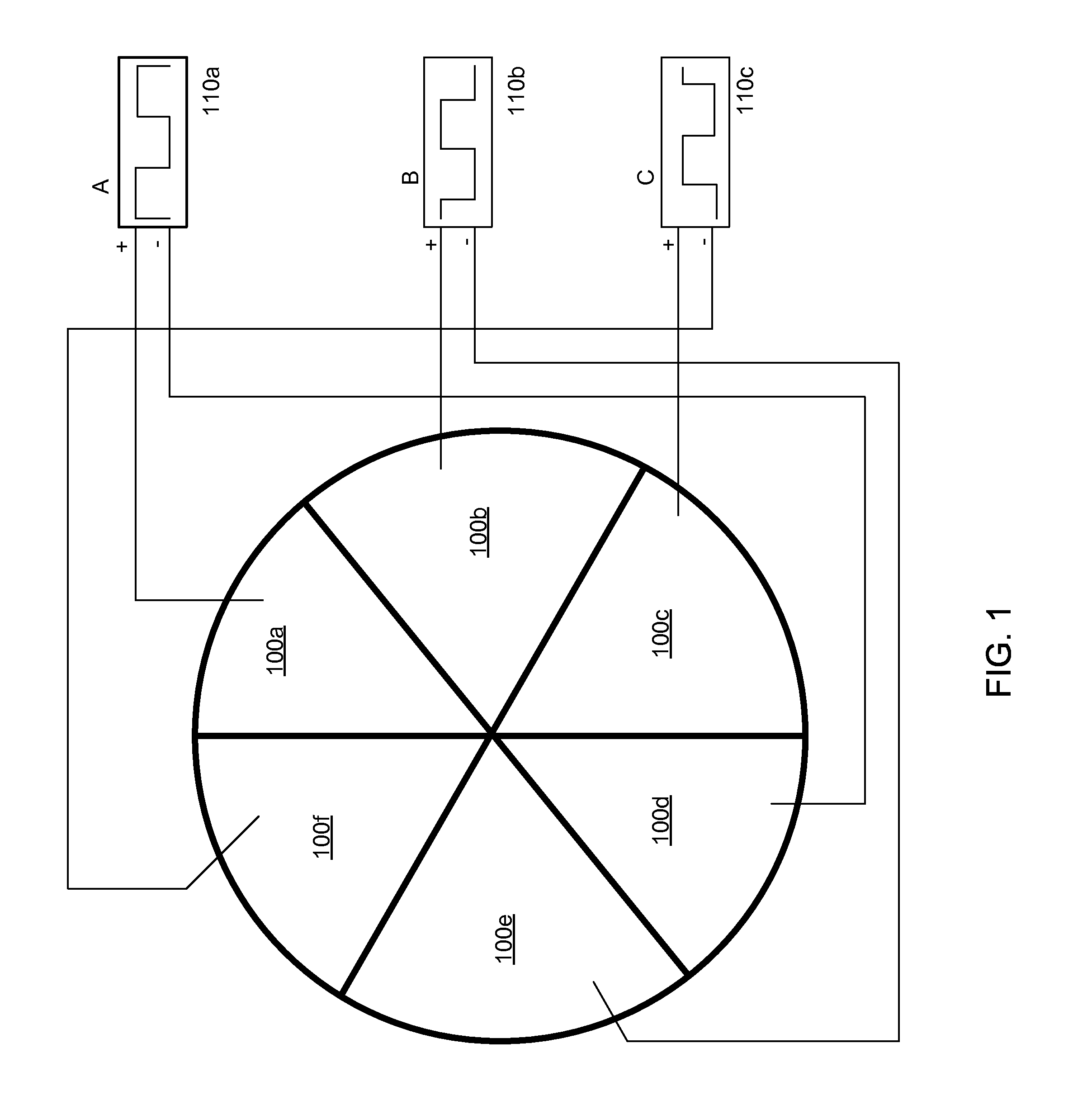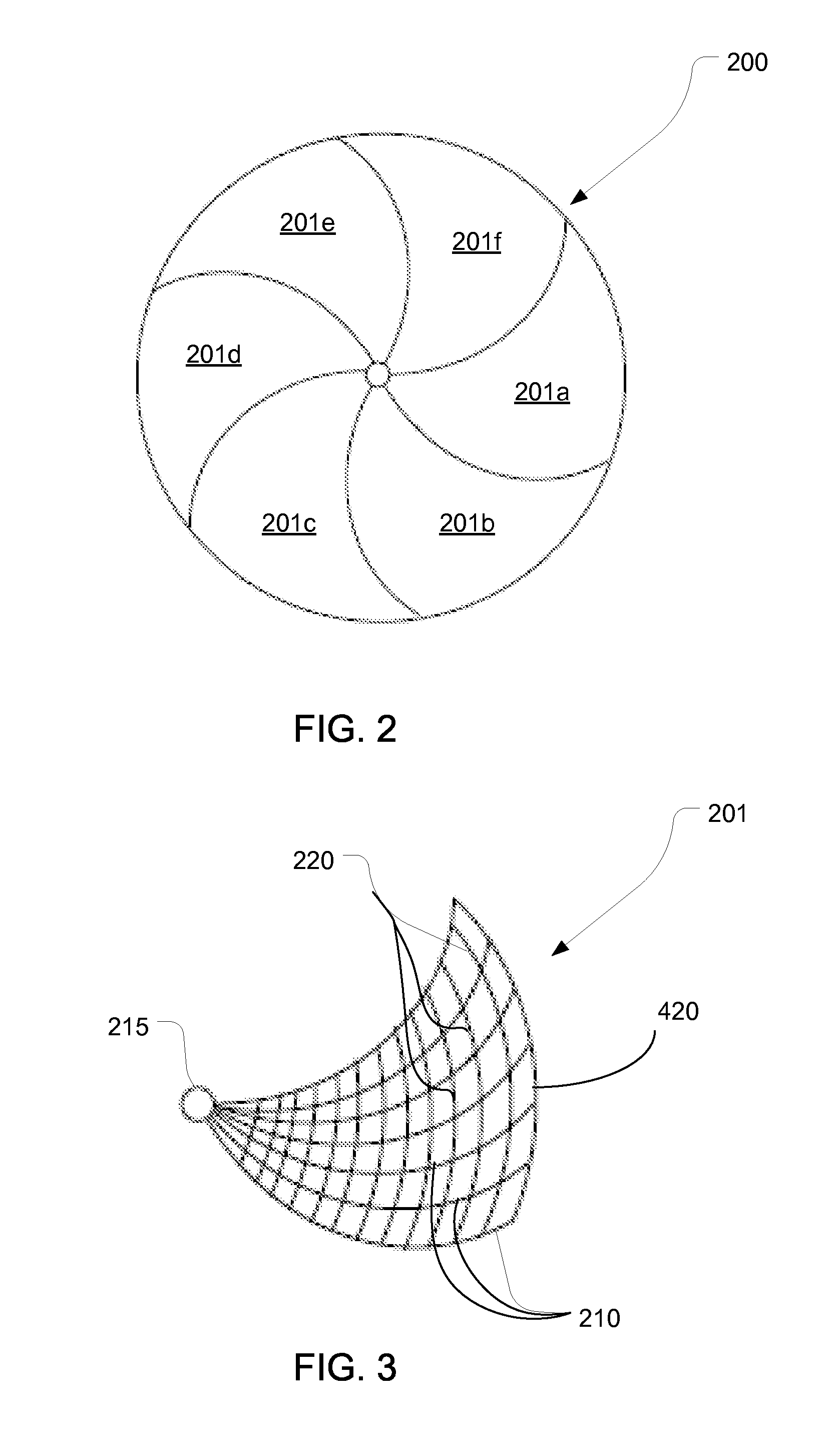Electrostatic chuck with radiative heating
a technology of radiative heating and electric chuck, which is applied in the direction of ohmic-resistance heating, electrostatic holding devices, electrical apparatus, etc., can solve the problems of insufficient typical post-implant annealing to restore all the damage caused, inability to accurately heat the workpiece, and crystal defects and amorphization
- Summary
- Abstract
- Description
- Claims
- Application Information
AI Technical Summary
Benefits of technology
Problems solved by technology
Method used
Image
Examples
Embodiment Construction
[0023]As described above, electrostatic chucks (ESCs) typically include several parts including a dielectric top layer, an insulating layer and a plurality of electrodes disposed between these layers or embedded in one of the layers.
[0024]These electrodes may be a separate layer between the dielectric layer and the insulating layer, or may be embedded in one of these layers. A top view of one embodiment of the chuck 200 is shown in FIG. 2. In this embodiment, the chuck comprises six equally sized regions 201a-f. Of course, a different number of regions may also be used. These regions may be shaped as shown in FIG. 2, or may be any other suitable shape, such as sectors. An electrode is disposed within each region 201a-f. In one embodiment, shown in FIG. 3, each electrode 420 is made up of a pattern of electrically conductive material that is embedded in the dielectric layer or insulating layer of the chuck 200. In some embodiments, this pattern may be a mesh. In some embodiments, the...
PUM
 Login to View More
Login to View More Abstract
Description
Claims
Application Information
 Login to View More
Login to View More - Generate Ideas
- Intellectual Property
- Life Sciences
- Materials
- Tech Scout
- Unparalleled Data Quality
- Higher Quality Content
- 60% Fewer Hallucinations
Browse by: Latest US Patents, China's latest patents, Technical Efficacy Thesaurus, Application Domain, Technology Topic, Popular Technical Reports.
© 2025 PatSnap. All rights reserved.Legal|Privacy policy|Modern Slavery Act Transparency Statement|Sitemap|About US| Contact US: help@patsnap.com



